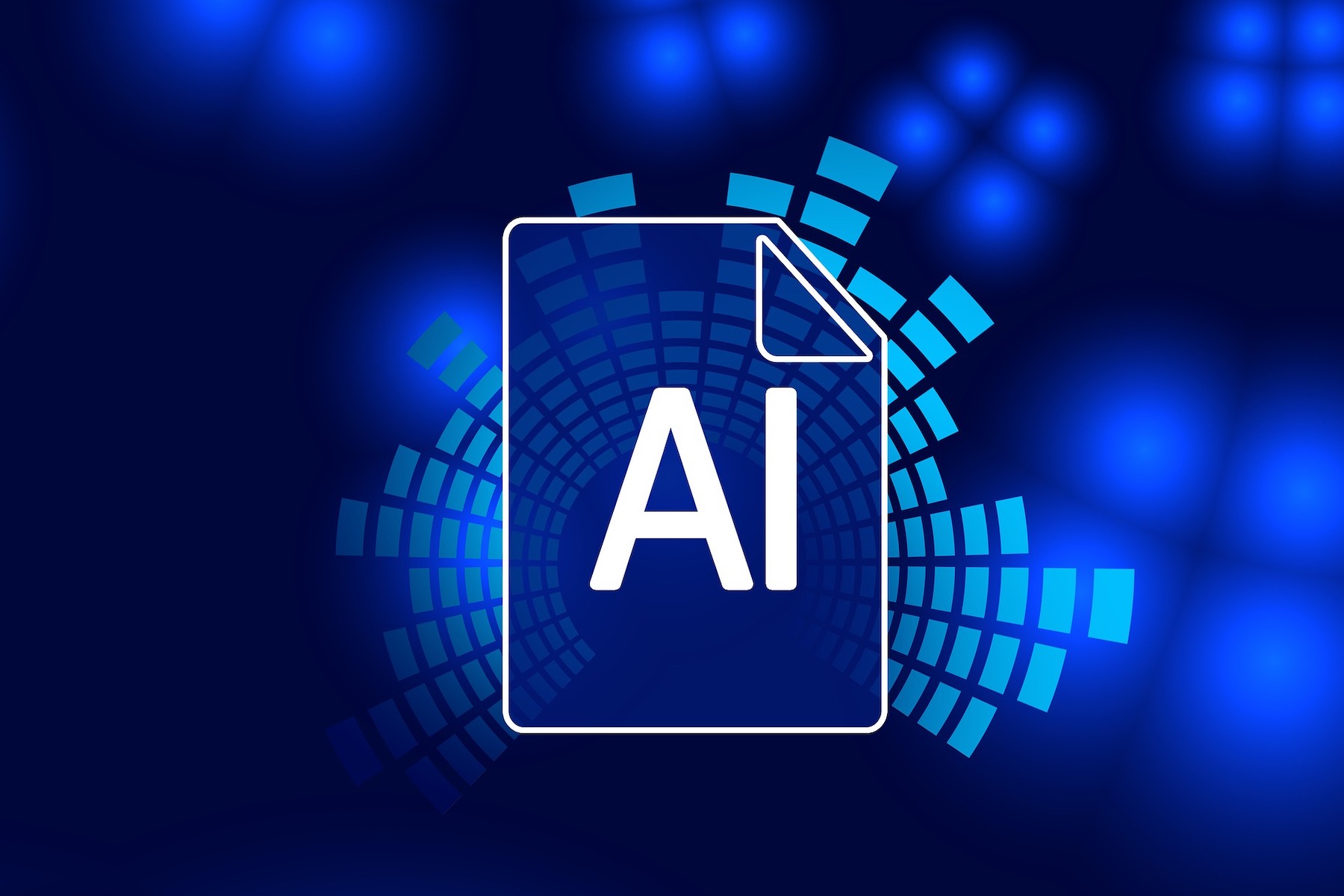There is growing curiosity about how artificial intelligence and machine learning fit into architecture, engineering, and construction. A new survey of A/E firms found that more than three-fifths of 652 respondents expect AI to improve their operational efficiency.
That survey, though, also found that the same portion of respondents wasn’t using AI yet, and two-thirds admitted they were struggling with where and how to apply AI.
These findings are part of the 45th annual Clarity Architecture & Engineering Study, a comprehensive report conducted by the enterprise software provider Deltek, and sponsored by AIA, the American Council of Engineering Companies, the Association of Consulting Engineering Companies|Canada, and the Society of Marketing Professional Services. The survey was taken between January and March of this year.
The report is organized to explore trends in Technology, Business Development, Human Capital Management, and Financial Management.
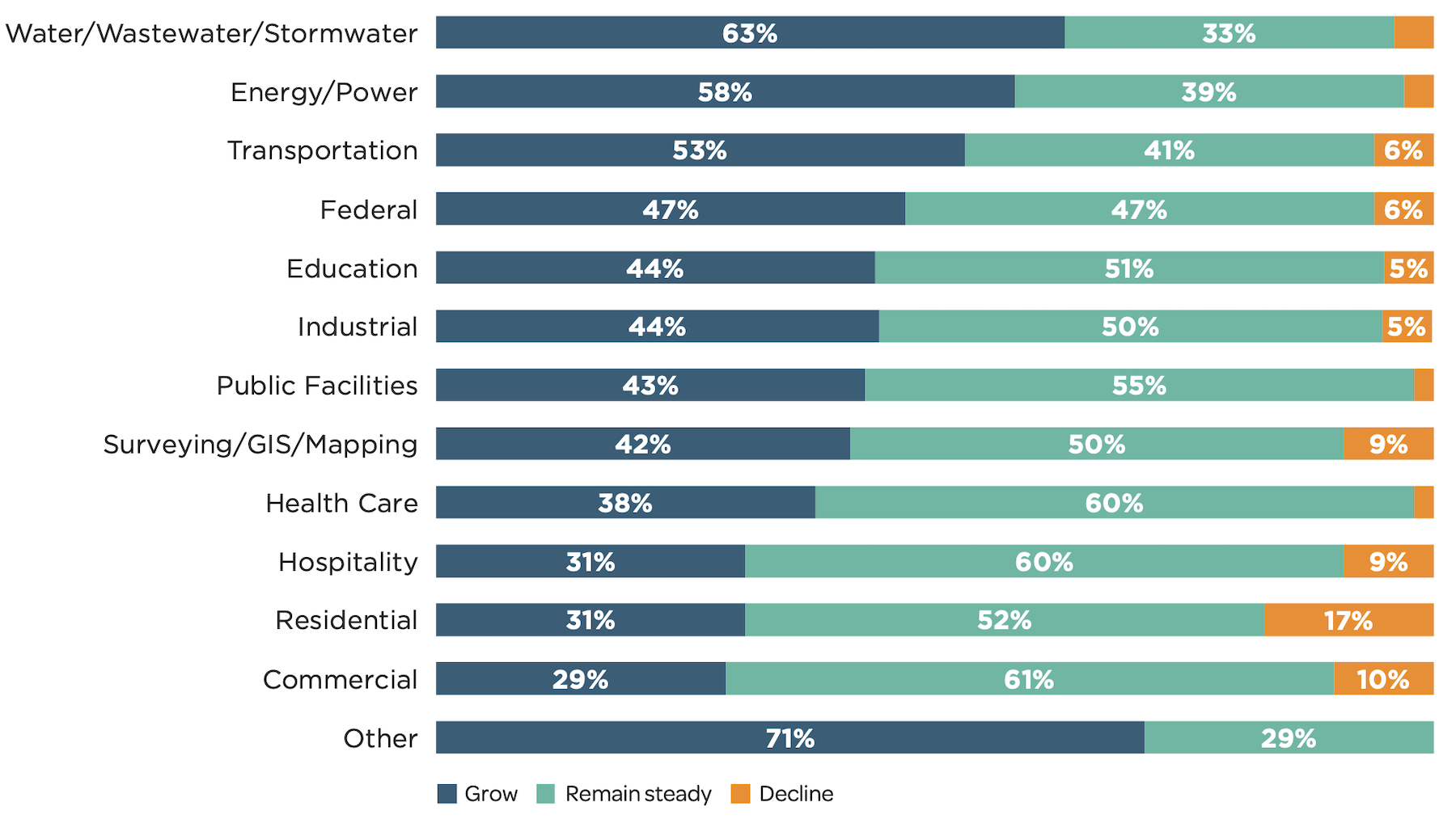
It found key financial metrics had held steady in 2023, reflecting an equilibrium following general economic volatility, inflationary pressures, and talent shortages observed in recent years. The survey’s respondents were generating, on average, 18.7% operating profit on net revenue that they forecast would grow that year by 10.9%.
The volume of proposal submissions and contracts awarded increased in 2023, yet the overall value of those contracts receded compared to the previous year. Work on existing buildings continued to be a strong opportunity area, notably in reconstruction, renovation and interiors versus new builds. Indeed, business has been so robust that firms have had the luxury of being more selective about the projects they accept.
But challenges remain: while high talent turnover has waned, worker shortages persist and many firms continue to make do with less, requiring the best-performing A/E firms to seek operational efficiencies and to cross-train talent.
Expanding tech use continues to be a strategic priority
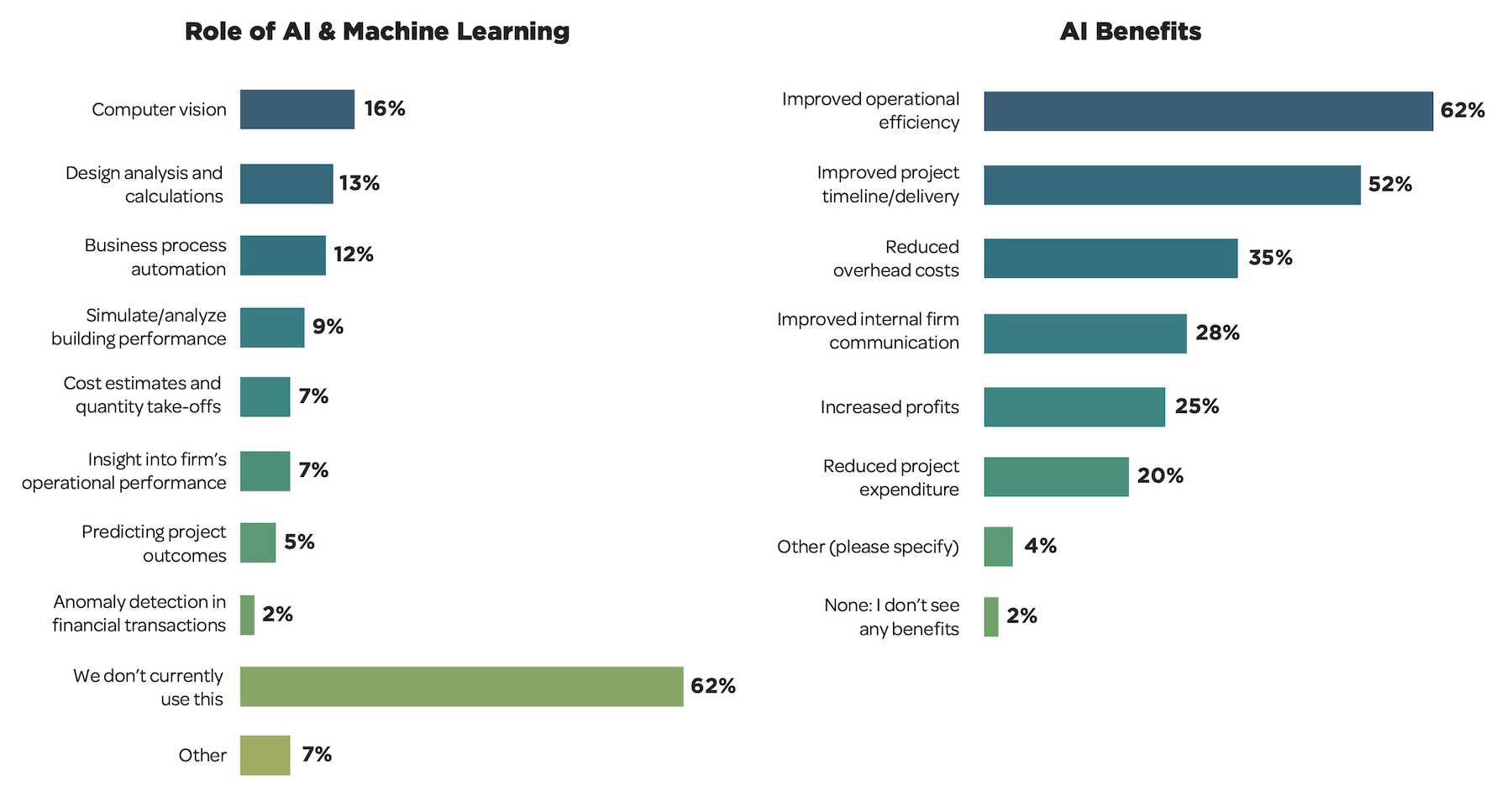
The report observes that, more than ever, A/E leaders are making technology a primary strategic focus. In doing so, Deltek urges those firms to turn to their own staffs for guidance, tap outside expertise, and consider client needs above all. Once A/E firms establish strategic priorities for technology, perceived cost will transition to an investment with long-term payoffs. Until then, “firms that allow costs to prevent them from advancing their business will fall behind. Firms must see past individual competing interests and expenses,” the report states.
When it comes to technological sophistication, A/E firms hold a relatively high opinion of themselves, with 35% self-classifying as “advanced” and “mature” on a digital transformation spectrum. Another 43% identify their firms as in the “applied” stage, which is in the center of the spectrum.
(The irony of these responses is that A/E firms are still reliant on manual data entry, especially for operations, administrative, and accounting. It’s not surprising, then, that 64% of respondents prioritized the creation of strategic technology implementation plans and 56% indicated the need to educate staff on critical technology trends.)
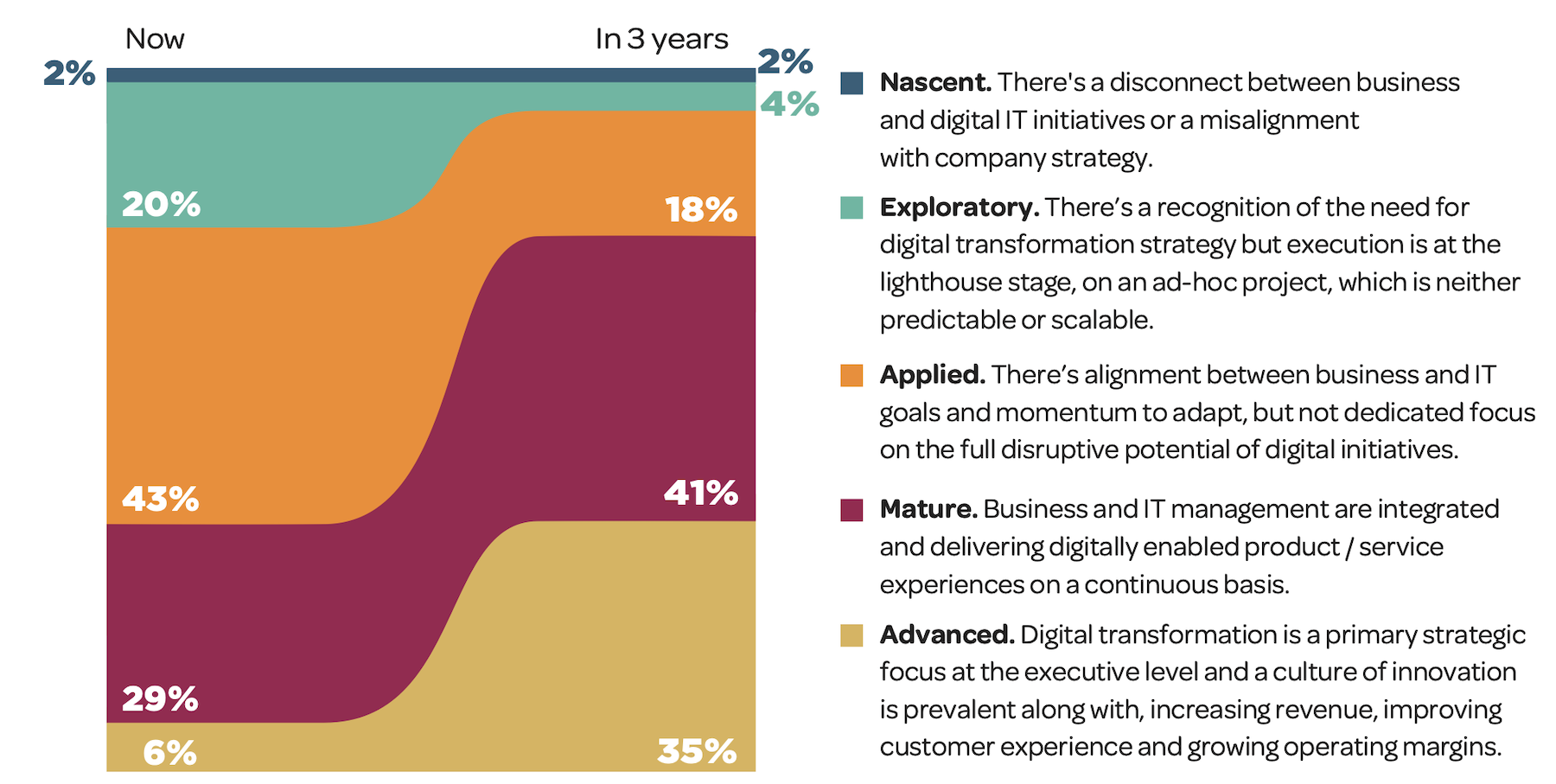
Looking ahead, 76% of firms are more than twice as likely to envision themselves as “advanced” and “mature” in just a few years. Another 18% expect to reach the “applied” stage, leaving only six percentage points in the immature “exploratory” and “nascent” stages.
Despite their relatively modest usage rate so far, firms largely expect AI to help most with improving operational efficiency (62%), improving project timeline/delivery (52%) and reducing overhead costs (35%). These priorities spotlight the urgent need to refine internal processes to yield cost savings and operational improvements.
On the other hand, concerns about data and cybersecurity have not abated for A/E firms, as more than 60% of respondents ranked it in their top three challenges for their IT operations two years in a row, with 29% identifying it as their No. 1 challenge.
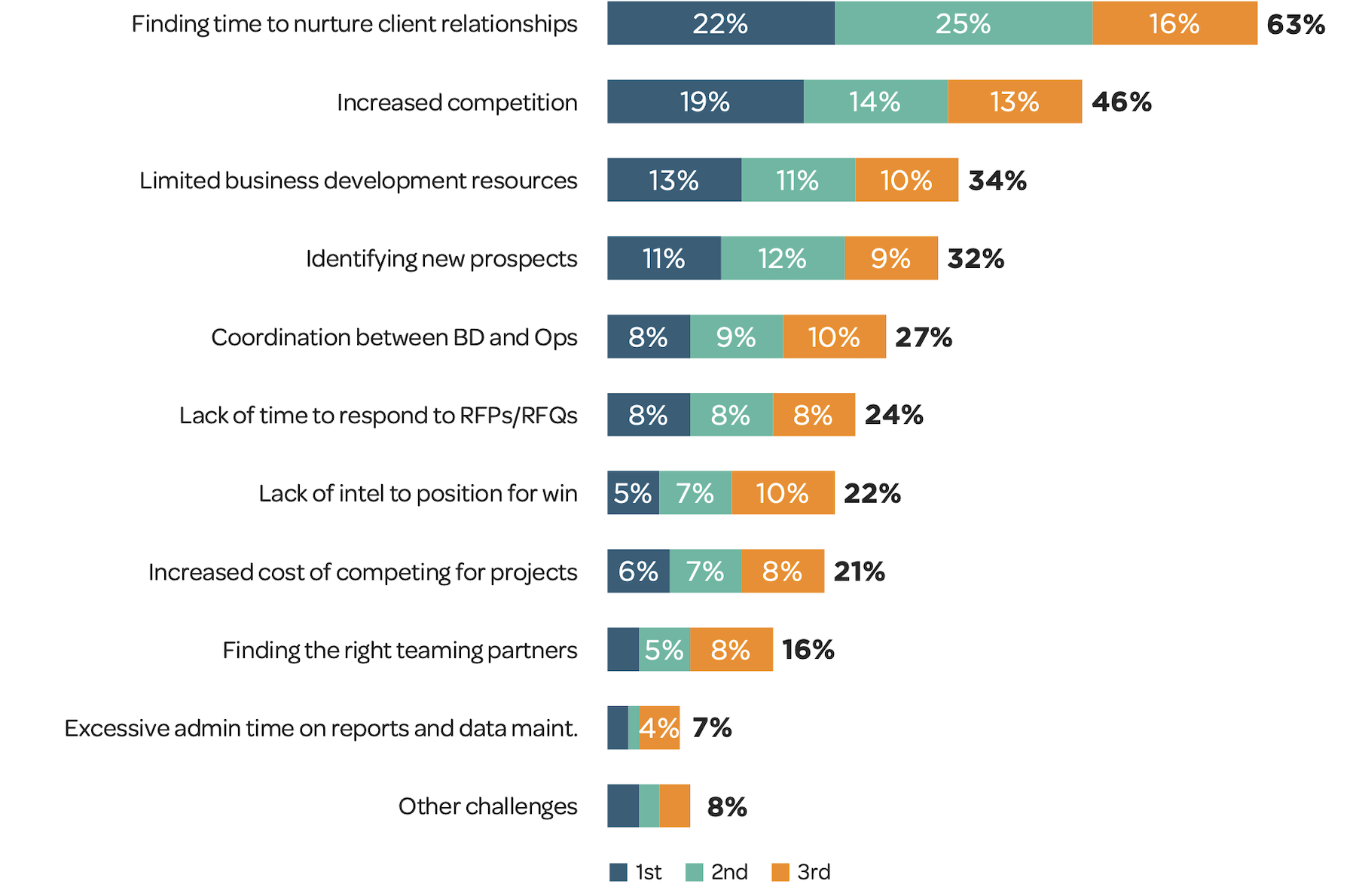
Almost half of firms report they leverage cloud solutions for more than 60% of their firm’s infrastructure, systems, workstations and storage. Significantly, even firms with historically few cloud solutions (0% to 19% leverage) have started their digital transformation journeys, jumping from 18% to 23% in one year.
Nearly one in four firms—16%—now offers technology services to clients as a revenue generator, or has one under consideration (7%). These services include technology consulting, application development, smart buildings/smart infrastructure and digital twins, among other services.
Career development programs being added
The report’s other revealing findings include:
•Firms with formal business development processes increased slightly to 46%. The report states that diversification is “strategically important,” as is finding the right teaming partners to identify and pursue opportunities outside of traditional offerings;
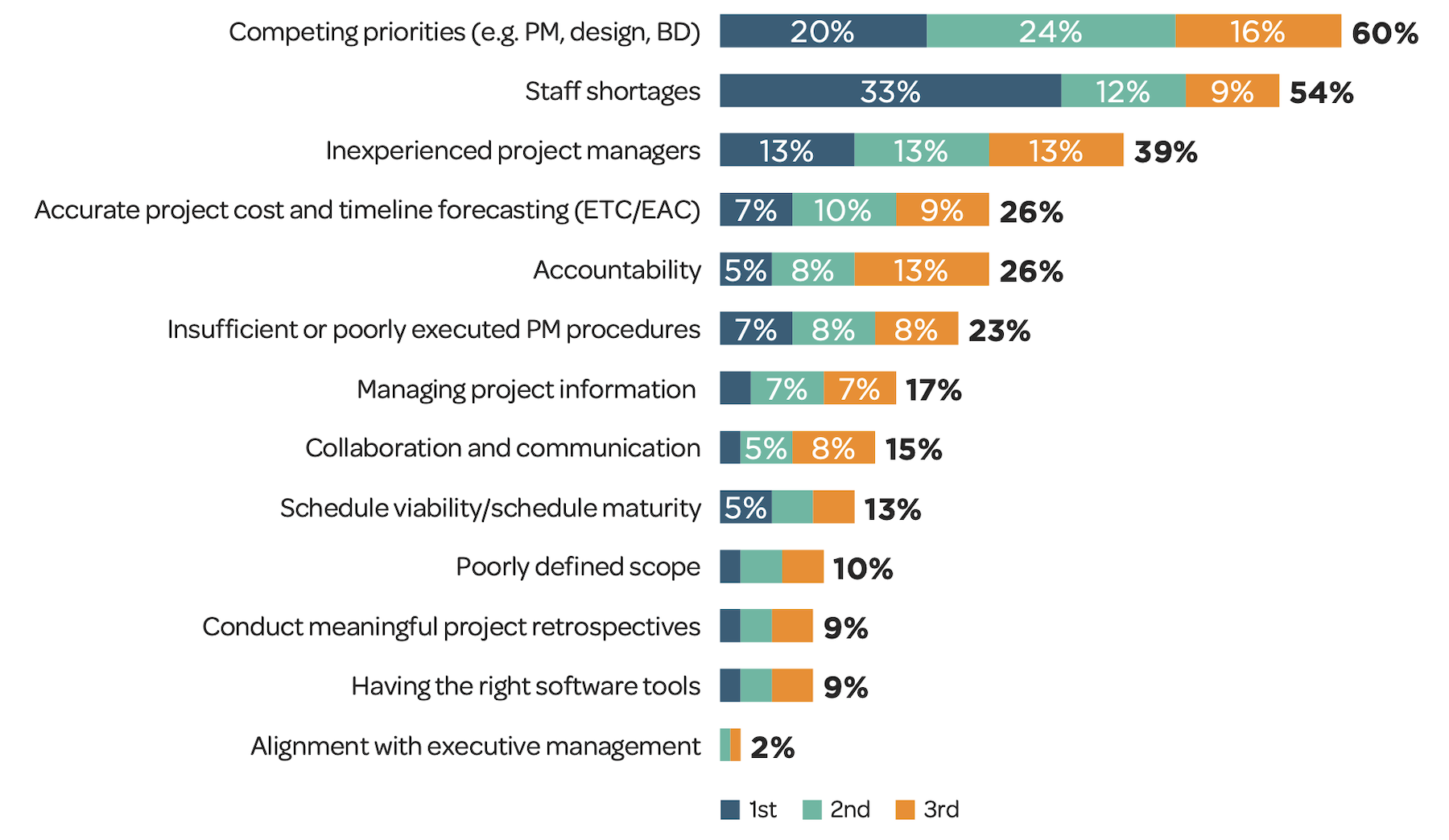
•Competing priorities (60%) and staff shortages (54%) ranked as the top two project management challenges, indicating that project managers currently feel like they’re getting stretched too thin and without sufficient support. Firms reported that 58% of projects were on or ahead of schedule, the lowest rate in seven years (it was 75% in 2017). Consequently, more firms are investing in project management training;
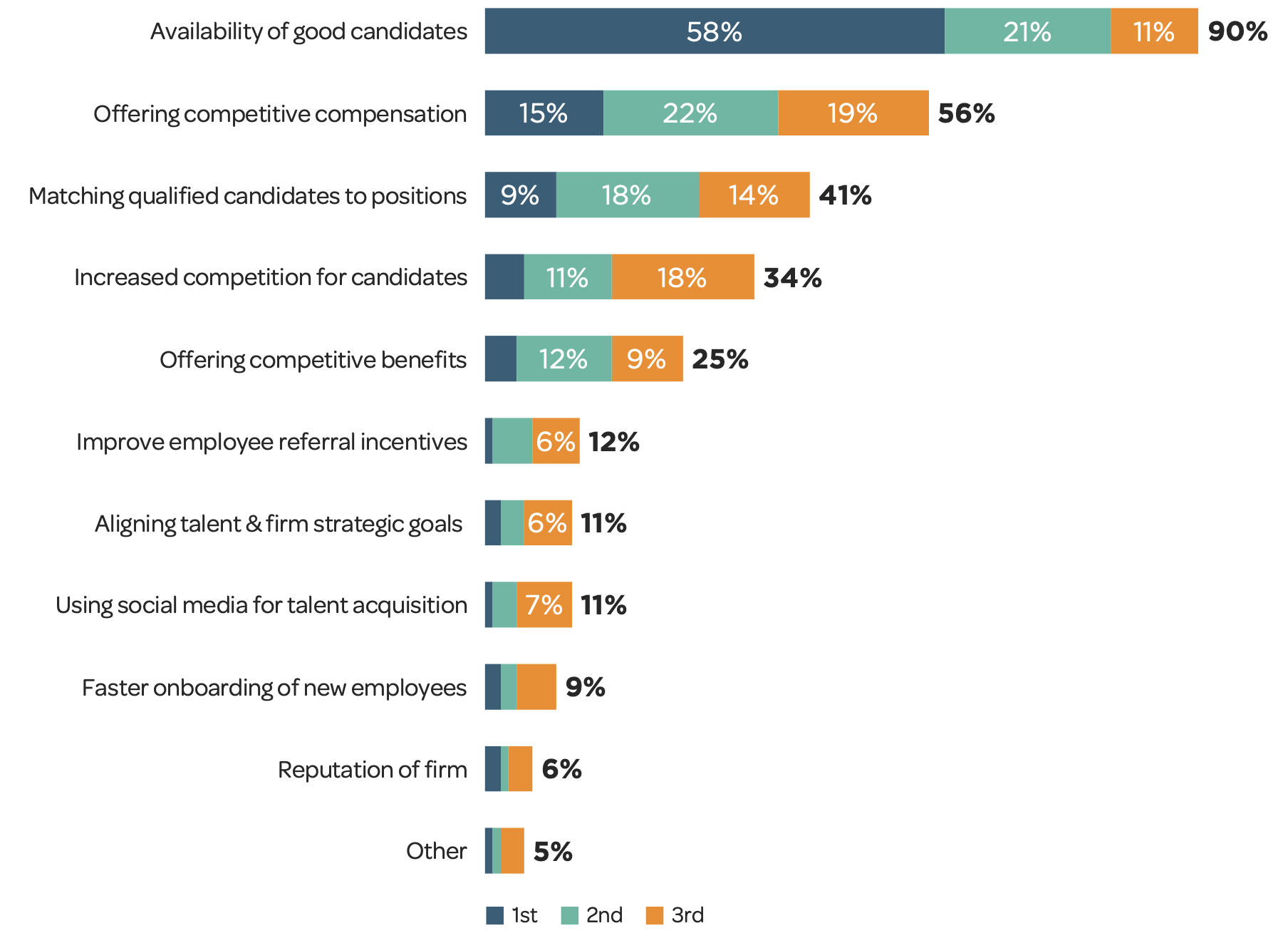
•Given the ongoing shortages in skilled labor—turnover still hovers around 14%—a growing number of firms are introducing and adopting structured career development programs. Overall, firms with career development plans grew to just under 40%, a 13-percentage-point increase year over year. Medium-sized and large firms demonstrated the most substantial growth in this area with medium-sized firms growing from 37% to 48%, and large firms climbing from 32% to 56%.
More firms are also turning toward providing better benefits to attract talent. More than a quarter of firms now utilize competitive benefits, up four percentage points year over year.
Related Stories
Digital Twin | Jul 31, 2023
Creating the foundation for a Digital Twin
Aligning the BIM model with the owner’s asset management system is the crucial first step in creating a Digital Twin. By following these guidelines, organizations can harness the power of Digital Twins to optimize facility management, maintenance planning, and decision-making throughout the building’s lifecycle.
Designers | Jul 25, 2023
The latest 'five in focus' healthcare interior design trends
HMC Architects’ Five in Focus blog series explores the latest trends, ideas, and innovations shaping the future of healthcare design.
Digital Twin | Jul 17, 2023
Unlocking the power of digital twins: Maximizing success with OKRs
To effectively capitalize on digital twin technology, owners can align their efforts using objectives and key results (OKRs).
Standards | Jun 26, 2023
New Wi-Fi standard boosts indoor navigation, tracking accuracy in buildings
The recently released Wi-Fi standard, IEEE 802.11az enables more refined and accurate indoor location capabilities. As technology manufacturers incorporate the new standard in various devices, it will enable buildings, including malls, arenas, and stadiums, to provide new wayfinding and tracking features.
Virtual Reality | Jun 16, 2023
Can a VR-enabled AEC Firm transform building projects?
With the aid of virtual reality and 3D visualization technologies, designers, consultants, and their clients can envision a place as though the project were in a later stage.
AEC Innovators | Jun 15, 2023
Rogers-O'Brien Construction pilots wearables to reduce heat-related injuries on jobsites
Rogers-O'Brien Construction (RO) has launched a pilot program utilizing SafeGuard, a safety-as-a-service platform for real-time health and safety risk assessment. Non-invasive wearables connected to SafeGuard continuously monitor personnel to prevent heat exhaustion on jobsites, reducing the risk of related injuries. RO is the first general contractor to pilot this program.
Contractors | May 26, 2023
Enhanced use of data is crucial for improving construction job site safety
Executives with major construction companies say new digital tools are allowing them to use data more effectively to reduce serious safety incidents and improve job site safety.
AEC Tech Innovation | May 12, 2023
Meet Diverge, Hensel Phelps' new ConTech investment company
Thai Nguyen, Director of Innovation with Hensel Phelps, discusses the construction giant's new startup investment platform, Diverge.
AEC Tech | May 9, 2023
4 insights on building product manufacturers getting ‘smart’
Overall, half of building product manufacturers plan to invest in one or more areas of technology in the next three years.
Sustainability | May 1, 2023
Increased focus on sustainability is good for business and attracting employees
A recent study, 2023 State of Design & Make by software developer Autodesk, contains some interesting takeaways for the design and construction industry. Respondents to a survey of industry leaders from the architecture, engineering, construction, product design, manufacturing, and entertainment spheres strongly support the idea that improving their organization’s sustainability practices is good for business.


